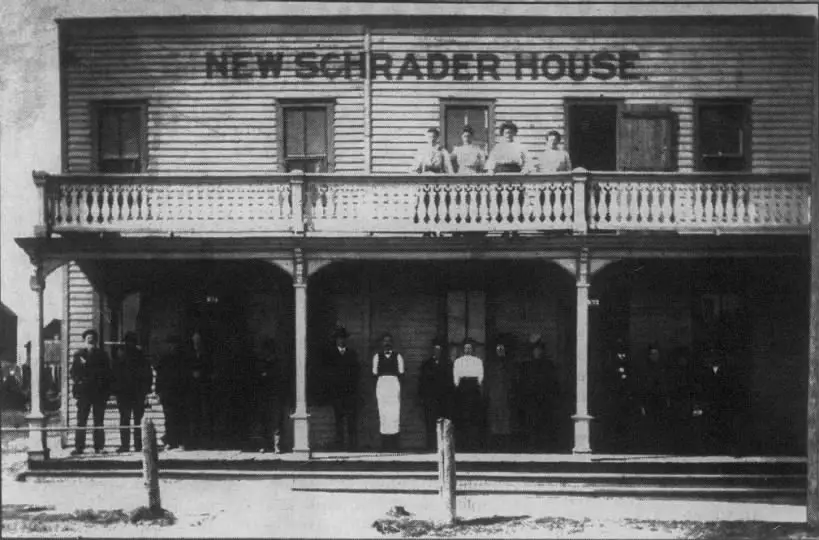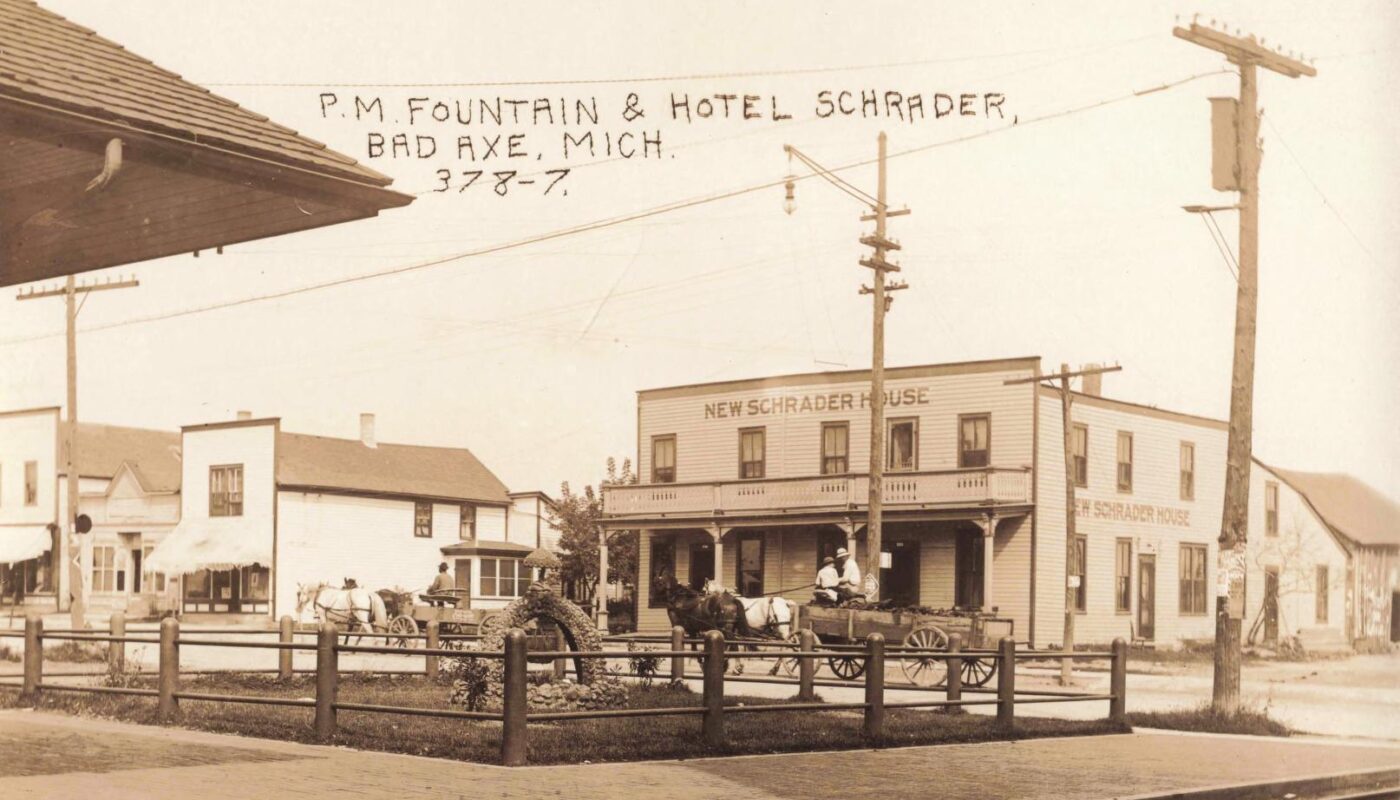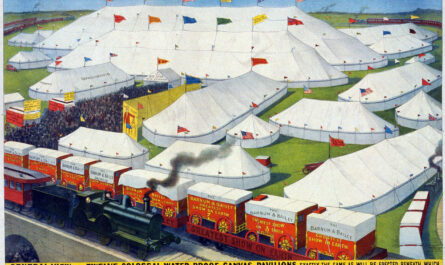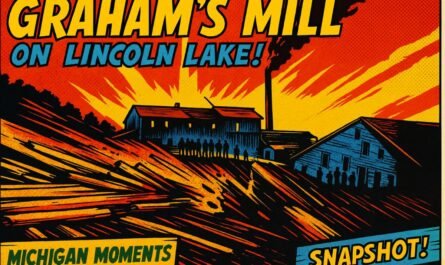At the turn of the 20th century, Bad Axe, Michigan, was a bustling seat of commerce and government in the Thumb. Captured in this rare postcard is a slice of that era—horse-drawn wagons, wood-frame storefronts, and the prominent “Schrader House hotel” standing along what was then a key corridor of travel and trade. In the foreground, a decorative fountain referred to as the “P.M. Fountain” anchors the scene. The initials likely stood for the Pere Marquette Railway, whose depot stood nearby. This minor park-like feature would have been a welcome sight to weary travelers arriving by train.

The Schrader House hotel served as one of Bad Axe’s leading hotels, catering to a steady stream of traveling salesmen, local officials, and visitors attending court or county business. Named for its proprietor, Charles E. Schrader, the hotel likely underwent renovations or reconstruction, earning the “New” prefix. With its two-story porch and prime location near the depot, it was a focal point in a growing town. These types of hotels were central to civic life, offering lodging, meals, and a place for locals to gather and trade news. Though modest in appearance, the Schrader House hotel was part of a wider network of independent hotels that shaped small-town Michigan in the railroad age.

What’s more, historical records show that Charles Schrader was no stranger to the hotel business. A period advertisement from Minden City promotes his other venture, the Deutsches Gasthaus—a German-style hotel located near the depot, offering “ample accommodations,” a good barn, and a fine livery. This suggests that Schrader was a well-established figure in Michigan’s Thumb hospitality scene, running properties that catered to rail travelers across Huron and Sanilac counties. His name tied together not just a building, but a standard of comfort and service along Michigan’s rural railway lines.

Today, the original Schrader House and the P.M. Fountain are no longer standing, replaced by modern buildings and streets designed for cars, not carriages. But the photograph remains a vivid time capsule—a quiet corner of Bad Axe frozen in sepia. It reflects a period when travel meant train tickets and horses, when a public fountain signaled progress, and when hotels like the Schrader House served as the town’s front porch. For local history enthusiasts, it’s more than just a building; it’s a poignant reminder of how transportation, business, and civic pride once converged on a dusty Michigan street.





